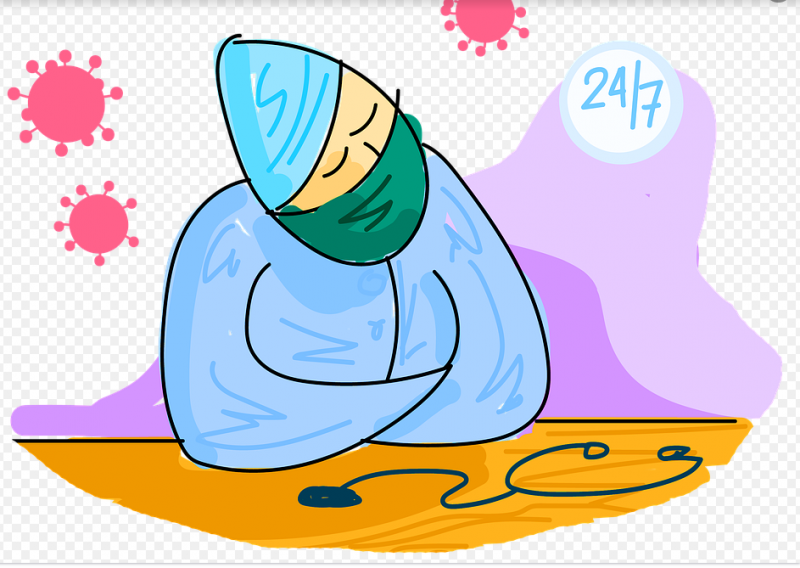
While the unemployment benefit ceiling is NIS 10.5 thousand per month, in practice unemployment benefit payments have been much lower in recent months. Thus, only 2% of the recipients of the benefits received more than NIS 10,000, and 64% received less than NIS 5,000; This emerges from data published by the National Insurance Institute. According to the data, 4% of unemployment benefit recipients receive less than NIS 1,000 a month and 9% receive between NIS 1,000 and NIS 2,000. 38% of benefit recipients receive between NIS 3,000 and NIS 5,000 per month. Since the beginning of the crisis, about 952,000 unemployment benefit claims have been submitted to the National Insurance Institute, and so far, according to the data, 466,000 people have returned to the labor market.
Of the approximately 952,000 claims, 13,000 claims have not yet been processed, 869,000 have been approved, and 70,000 have been rejected. The data also show that according to unemployment benefit claims, 10,000 people returned to the labor market in July - but another 18,000 new claims were registered. In June, 145,000 people returned and only 29,000 new claims were registered, and in May 267,000 people returned to the labor market while only 52,000 new claims were registered. A total of 466.4 thousand people returned to the labor market (48% of all those entitled to payment - from the corona period and before).
In terms of total unemployment benefit payments paid by the National Insurance Institute, the peak was surprisingly paid for April, when the institution paid NIS 3.2 billion to 900,000 unemployed and salaried employees (compared to payments for March, when NIS 1.7 billion was paid to 82.3 thousand people). For the month of May, NIS 2.9 billion was paid to 831 thousand people and for the month of June, NIS 1.9 billion was paid to 521 thousand unemployed and employees who were expelled to the IDF.
Meir Spiegler, CEO of the National Insurance Institute, stated that "the National Insurance data reflect the actual recipients of unemployment benefits during the Corona crisis, but do not show the actual unemployment rate. There are many who have 'fallen between the cracks' and need help at this time - and it is our duty as a society to provide them with an appropriate social response. "The Social Security regularly transmits to decision-makers the data on benefit recipients, the increase in requests for assistance, segmentations by industry and more as a basis for an objective response to those who need it."
Minister of Labor and Social Affairs Itzik Shmuli said that "the Ministry of Labor and Welfare is working hard to formulate a comprehensive and professional plan to move the economy and encourage training and employment. Alongside the success of the struggle I led to provide a safety net Time: also to ensure people a safety net for existence and at the same time to ensure vigorous and effective actions that will support employment and growth. "
The dire consequences of the Corona crisis: 37,600 businesses closed in the first half of the year. Of these, 1,550 restaurants, bars and cafes, more than 1,000 businesses in the field of contracting construction work and renovations, about 600 transportation and transportation companies and about 450 fashion and clothing stores - according to a survey by Dun & Bradstreet.
The company estimates that in 2020 as a whole, 85,000-80,000 businesses are expected to close - an increase of about 85% in the number of business closures compared to 2019.
In a previous survey published by the company in May, it estimated that in 2020 as a whole, about 70,000 companies and businesses are expected to close - a figure that indicates a 50% increase in the number of business closures compared to 2019, when about 45,000 businesses closed. Dun & Bradstreet now explains the new expectation that "our previous estimate was based on a continuous, unrestricted business move that leads to a halt in business activity in certain industries, which is delaying the recovery of the economy. "Who still managed to survive the first closure - will not be able to bear the impact of the recurring restrictions in terms of flow."
The second wave, which came shortly after the first wave and led to new restrictions, resulted in the probability of closing a business rising to a rate of more than 13%, compared to a probability of closing at a rate of about 7.5% in 2019.
Articles Archive
Top Categories
ABOUT IFI TODAY

Lorem ipsum dolor sit amet, consectetur adipisicing elit, sed do eiusmod tempor incididunt ut labore et dolore magna aliqua. Ut enim ad minim veniam, quis nostrud exercitation ullamco laboris nisi ut aliquip ex ea commodo consequat. Duis aute irure dolor in reprehenderit in voluptate velit esse cillum


Comments